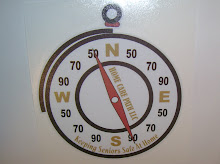The Centers for Medicare and Medicaid (CMS) have enacted policy to change the way service has been delivered in the hospital setting. Public (Medicare) funds and private (commercial insurance plans) health insurance plans will no longer reimburse contracted providers for the full amount of a re-hospitalization. Hospital readmissions are no longer an accepted part of medical practice.
This is the health system payers current means to manage the out flow of investment. The payer is defining the skilled inpatient need as a separate part of the patients treatment and recovery experience. The payer is designating the skilled inpatient services as different from the health care community providers can deliver at a lower rate of reimbursement.
The expected result looks like:
1. a decrease in the number of patients readmitted to the hospital within 30 days of discharge
2. a decrease in the number of patients staying over night in a hospital as out patient observation
3. a decrease in the number of patients returning to the emergency department 14 days after discharge
4. a decrease in skilled home care (RN, PT, OT, ST) performing supportive care tasks in the home
For this to work safely the inpatient providers are challenged to forge a strong collaboration with the growing number of community providers serving the same population. This looks a bit different to staff employed throughout the inpatient setting. Day surgery is now expected to engage the patient and family to document a plan of adequate support for the scheduled procedure. The need exists and the inpatient service does not deliver that care as part of the procedure. The connection with the providers in the community capable of meeting the need is much more important.
To add to the mix of system adjustment is the variation in pay sources. Medicare and private commercial health insurance plans do not completely reimburse the hospital for the service delivered. The patient is expected to contribute through deductibles, copayments, add on policies, and private payment. Now the insurance payer is explaining to the hospital staff, the patient population, and community providers the specific service and frequency that can result in a reimbursement.
So, despite an identified need for extra assistance with tasks like bathing, dressing, eating, toileting, remembering medications, ambulation, transfers, errands, a clear pay source is not available with the brief inpatient registration process. But, hospital staff will realize that help with these daily tasks are part of reducing readmissions, repetitive emergency room visits, and outpatient observational stays.
Hospitals upon seeing the elders need will make a referral to a community (
www.homecarepath.com) based organization with staff available to provide the extra support. Readers are encouraged to watch the health care system as these changes unfold in our community.
You are cordially invited to download your free PATH ALONG app today
http://appsmakerstore.com/appim/j6kcdet8xvwk4s Home Care Path
www.homecarepath.com and the Wisconsin PATH ALONG model deliver an advanced supportive care service. Helping seniors in the home, with clinic visits, at the hospital, nursing home and assisted living facility. Helping seniors downsize with a move in to an adult child's home. 2013 rates are 20.00 per hour. Simply call 608-432-4286 to schedule an interview. We can be there when you are working. We accept long term care insurance. Services can be tax deductible. Help with resources and the transition from private payment to public funded programming. Valuing home and human life.
